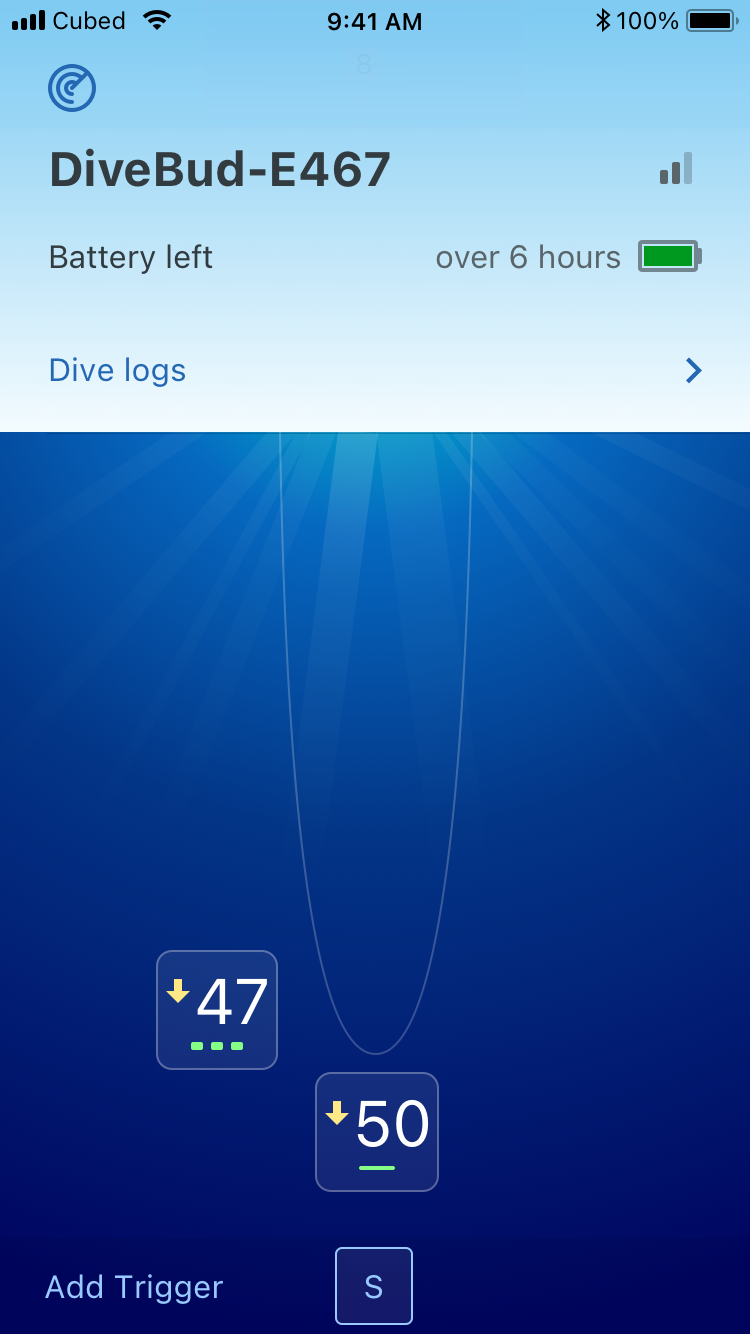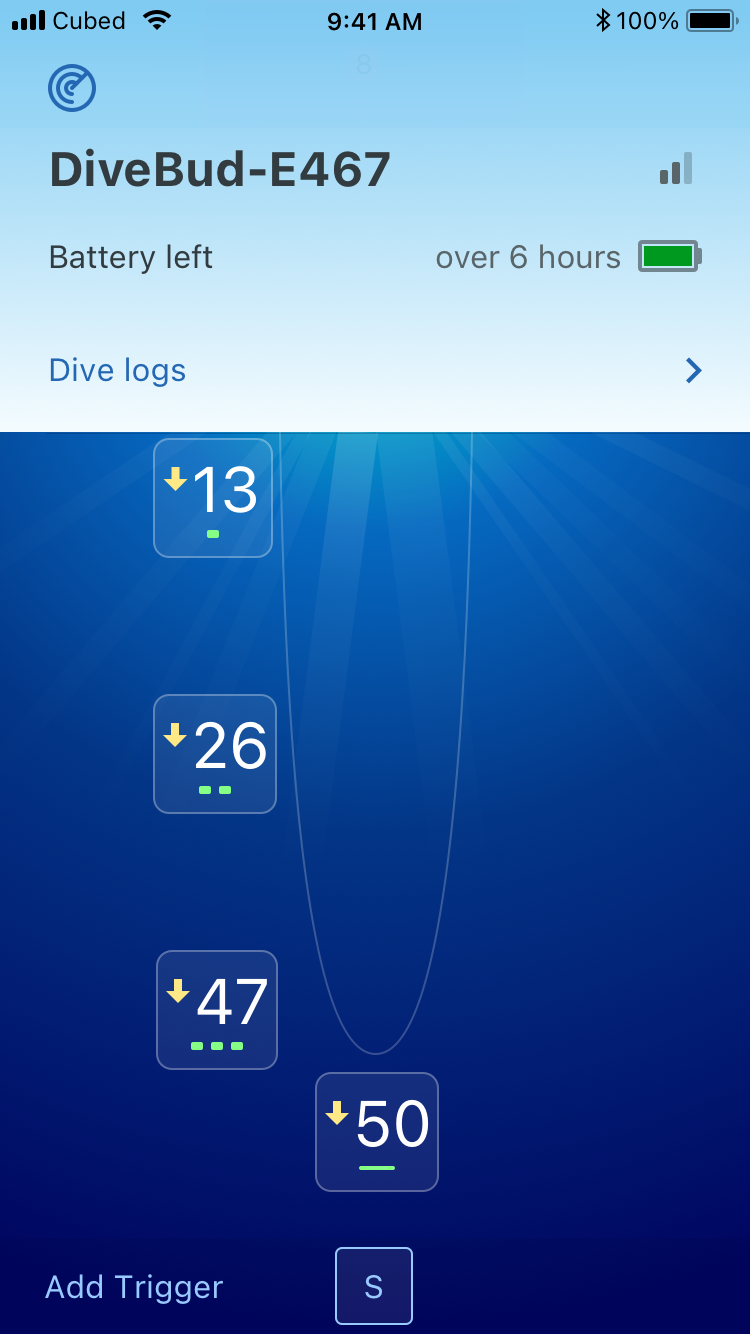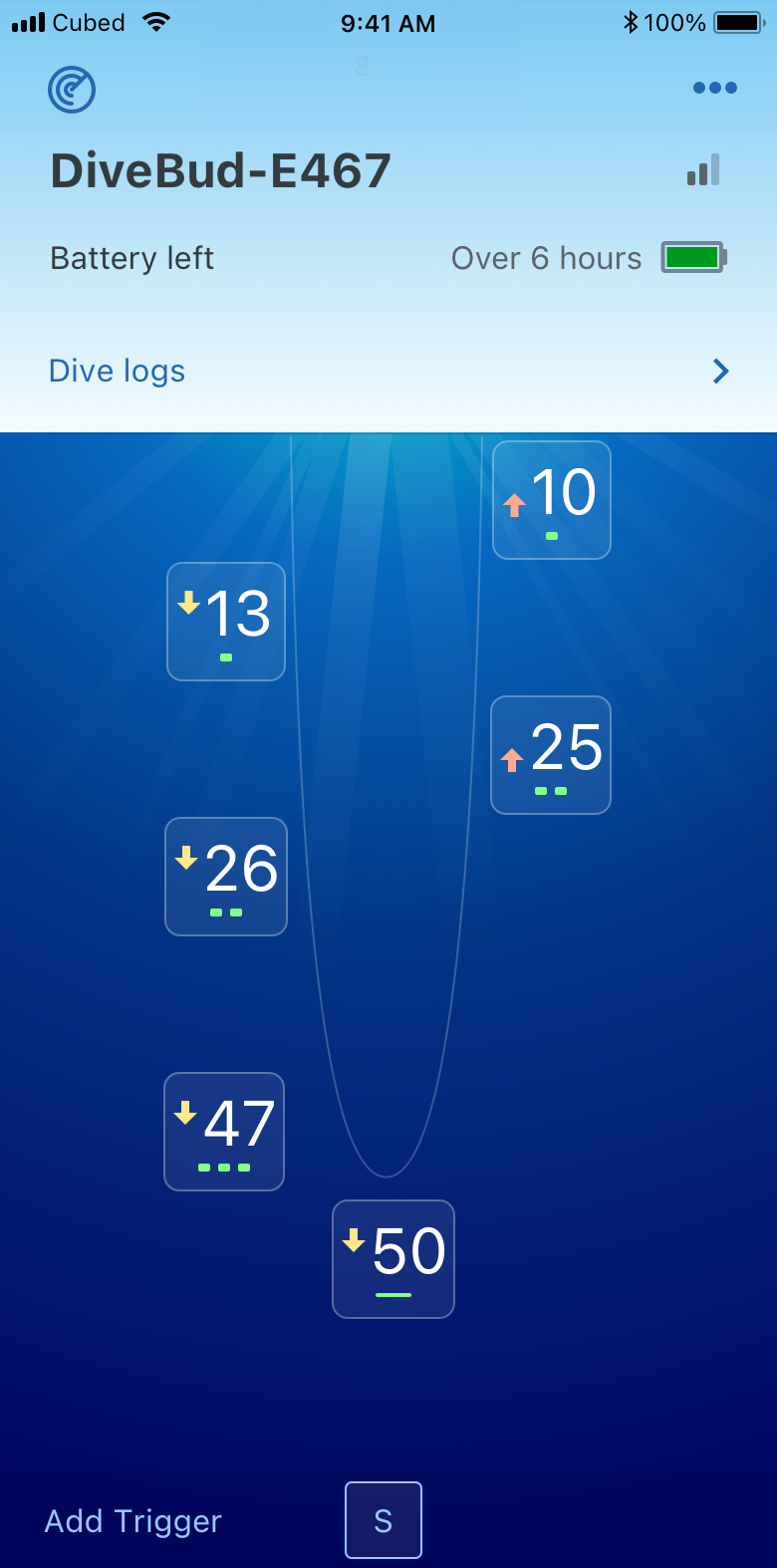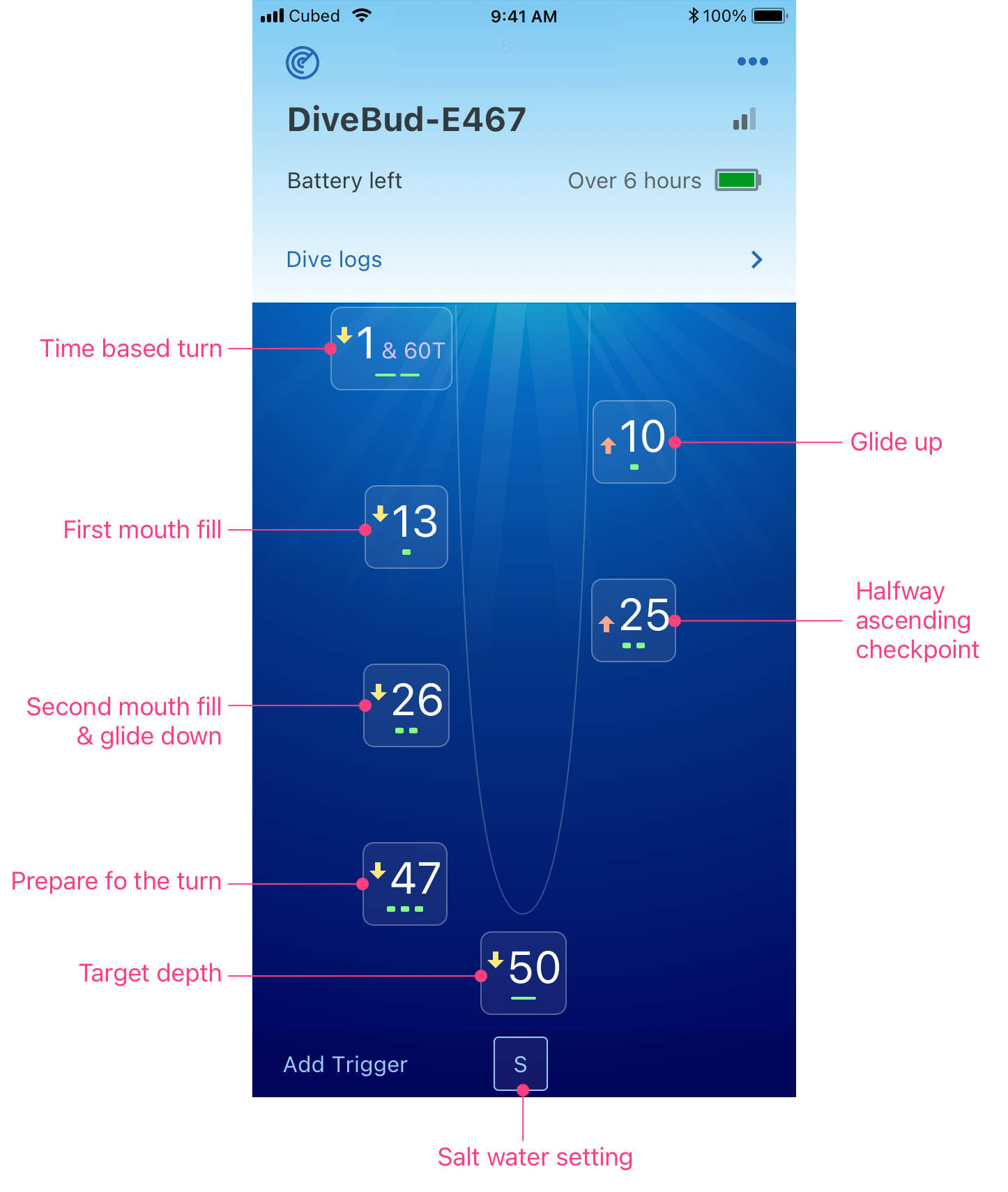Freediving training is challenging and enjoyable at the same time. We get together, we dive along the safety line and gradually increase our depth when we are ready.
Freedivers may use a traditional diving computer to track their depths. However, when it comes to freediving, there are a few challenges found within the use of a traditional diving computer that the DiveBud naturally overcomes:
- As you progress to new depths the water around you gradually becomes darker with every meter. If you train in a lake it becomes pitch black after about 10 meters. This means that unless you pay big bucks for a diving computer that has an automatic backlight, turning to look at the watch mid-dive is not a viable option.
- As you progress with freediving as a sport you’ll need to gradually increase your speed. And to glide faster, your posture will need to be optimised. However, moving your hand to look at the dive watch breaks this optimal posture, slowing you down and wasting precious seconds.
- Practising no fins or free immersion disciplines can be even more challenging as your hands are occupied with doing the strokes or pulling the rope.

Our freediving computer DiveBud can help you to progress and navigate in challenging underwater conditions. By securing it to the mask strap or placing it inside the cover of your hood, DiveBud frees up your hands underwater. This allows you to focus on the necessary actions of the dive whilst still being notified of your depth & time checkpoints.
Let’s talk about the DiveBud setup in detail.
Setup for target depth

DiveBud uses advanced alarms to notify the diver of their depth & time checkpoints. The simplest alarm has depth, direction and sound.
The white text indicates the depth in meters. The yellow row indicates the direction in which the target depth is reached. The green bar indicates the sound type.
In this example, at 50 meters on descending, the alarm will play one long beep.
At competitions, we typically set an alarm a few meters before the target depth so can we stretch out our arm and get ready for the turn.
In this way, you will most likely have 2 alarms present:
- Prepare for the turn at 47 meters.
- The actual target depth at 50 metres.
Note the “S” symbol inside the rounded rectangle in the middle of the bottom toolbar. It indicates the current water type – S for saltwater. Make sure to set up water type correctly before the dive. The incorrect setting will affect the actual depth of the trigger due to the difference in water density.
Setup for mouth fill and glide down

Typically we have two mouth fills on the way down and so we create an alarm for each of them. Typically the first one is at 10-15 meters and the second is at 22-30 meters. Both alarms are descending.
We can also set the glide down descending alarm. Glide down is the moment when a freediver stops any movements and concentrates on equalisation only. It starts when the diver is deep enough to be negatively buoyant. In this example, we combine the second mouth fill with the glide down at 26 meters, but that depends on your gear and the type of water you are diving in.
Ascending alarms
Let’s talk about ascending alarms — a unique DiveBud feature.
Generally, freedivers feel ascents longer than the descents. It is great to have some alarms when ascending to reassure the diver of their progress towards the surface.
This is especially important for dives in dark water where the rope gets invisible or lanyard entanglement may occur.
The apricot coloured arrows pointing upwards indicates ascending alarms.
In this example, we set the depth of the first ascending alarm halfway up at 25 meters. With this alarm, the diver feels calm and confident about their progress on the way up.
The second ascending alarm at 10m prepares the diver for the glide up. The hard part is over, let’s relax on these last meters of diving and get ready for the recovery re-breathing and the surface protocol.

Final touches with time based turn

It is important to stay safe and within your time limits. Especially when you challenge yourself to reach new depths.
In this example, the diver would like to limit their total dive to 2 minutes.
To simply the math we assume both the descent and the ascent will be equally 1 minute long. So, if the target depth is not reached in 1 minute – meaning the dive-time allocated for the descent – it is time to turn back.
Important! You need to calculate your descent time vs. the total dive time based on your individual data.
Enjoy your freediving and train safely!
